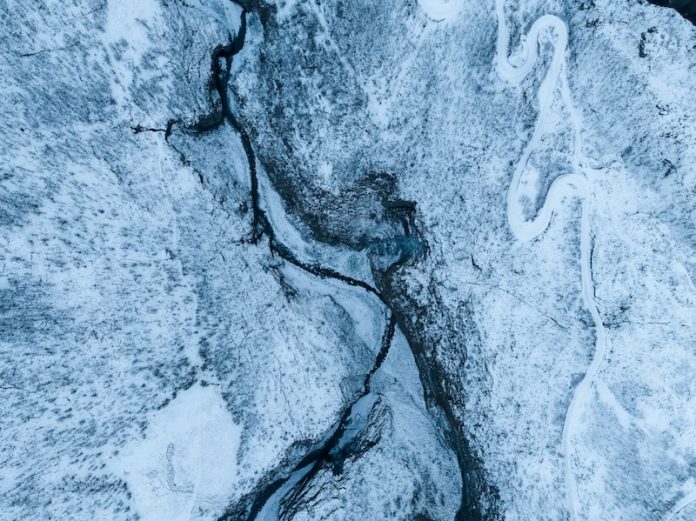
Greenland’s massive ice sheet, which covers more than 1.7 million square kilometers, is the largest freshwater storage in the northern hemisphere. However, this enormous ice sheet is shrinking at an alarming rate.
Since the 1980s, over a trillion tonnes of ice have melted, and in the last decade, the rate of melting has increased six times. A recent study found that Greenland is now losing around 30 million tonnes of ice every hour.
This rapid loss of ice is a major concern for the planet. When the ice sheet melts, it causes sea levels to rise, which threatens coastal cities and communities. Additionally, the freshwater from melting ice changes the salt levels in the ocean, affecting marine life and ocean currents.
Scientists estimate that if the entire ice sheet melts, global sea levels could rise by about 7 meters, which would flood many coastal areas worldwide.
Finding the Tipping Point
New research, published in The Cryosphere, has identified a critical threshold—called a “tipping point”—that could determine whether the Greenland ice sheet can recover or if it will continue melting until it disappears completely.
A team of scientists, led by Dr. Michele Petrini from Norway’s Bjerknes Centre for Climate Research, studied how much ice the sheet gains and loses over time. They focused on the “surface mass balance,” which is the difference between snowfall adding ice to the sheet and melting removing it. Using computer models, they examined how different climate conditions affect this balance.
They found that if Greenland loses about 230 gigatons (230 billion tonnes) of ice in a single year—about 60% of what it used to have before humans started burning fossil fuels—then the ice sheet may be unable to recover.
This would trigger a process that could eventually lead to the complete melting of Greenland’s ice, though this would take between 8,000 and 40,000 years.
This tipping point corresponds to a global temperature increase of 3.4°C above pre-industrial levels. For comparison, in 2024, the world’s temperature had already risen by 1.5°C, crossing a key limit set by the 2015 Paris Agreement to prevent severe climate impacts.
How the Ice Sheet Is Changing
The study found that Greenland’s ice sheet is particularly vulnerable because of its shape and the land beneath it. The ice is mostly found at high elevations, but as the ice melts, the surface lowers.
Normally, the land underneath rises slightly when the weight of the ice is removed, a process called “glacial isostatic adjustment.” However, if the ice melts too quickly, the land cannot rise fast enough to keep up.
Once the ice sheet drops too low, it enters a dangerous cycle where melting speeds up. Less ice means less sunlight is reflected away, and more heat is absorbed by the darker land and ocean. This further warms the area and causes even more melting, creating a “feedback loop” that worsens the situation.
A Key Area That Could Help Prevent Total Ice Loss
One part of Greenland’s ice sheet—its western edge—could play a crucial role in determining whether the entire ice sheet disappears. The study found that as long as this western section remains connected to the coast, it can help slow down ice loss.
However, if it melts too much and loses its link to the coastal region, the rest of the ice sheet could retreat eastward, leading to more than 80% of Greenland’s ice disappearing.
Interestingly, evidence suggests that this part of the ice sheet helped Greenland retain ice during the last interglacial period (130,000 to 115,000 years ago), when global temperatures were warmer. This gives scientists hope that protecting this region could help stabilize the ice sheet.
What This Means for the Future
The researchers acknowledge that their study does not include certain climate factors, such as how clouds and precipitation might affect the ice sheet.
Some scientists believe that as the ice sheet shrinks, increased cloud cover could lead to more snowfall in Greenland’s interior, slightly slowing ice loss. However, the team believes this effect would not be strong enough to prevent the tipping point from happening.
Ultimately, the study reinforces the urgent need for action on climate change. Human activities are pushing the Earth closer to dangerous tipping points, not just in Greenland but in other parts of the world as well. Scientists warn that without serious efforts to reduce greenhouse gas emissions and slow global warming, we may soon cross thresholds that lead to irreversible changes.
This research is another reminder that climate change is not a distant problem—it is happening now, and the choices made today will shape the future of the planet.
The research findings can be found in The Cryosphere.
Copyright © 2025 Knowridge Science Report. All rights reserved.



